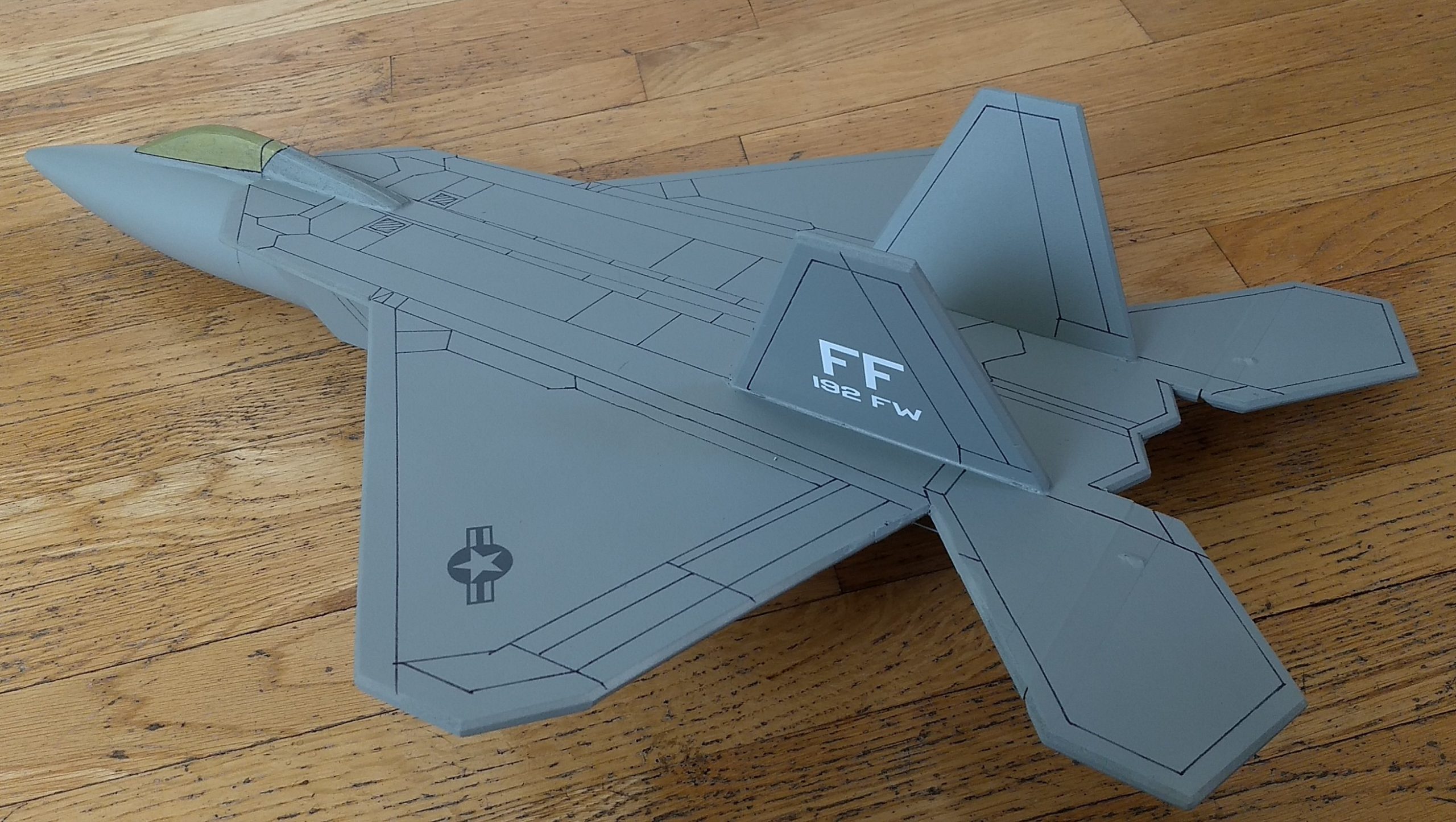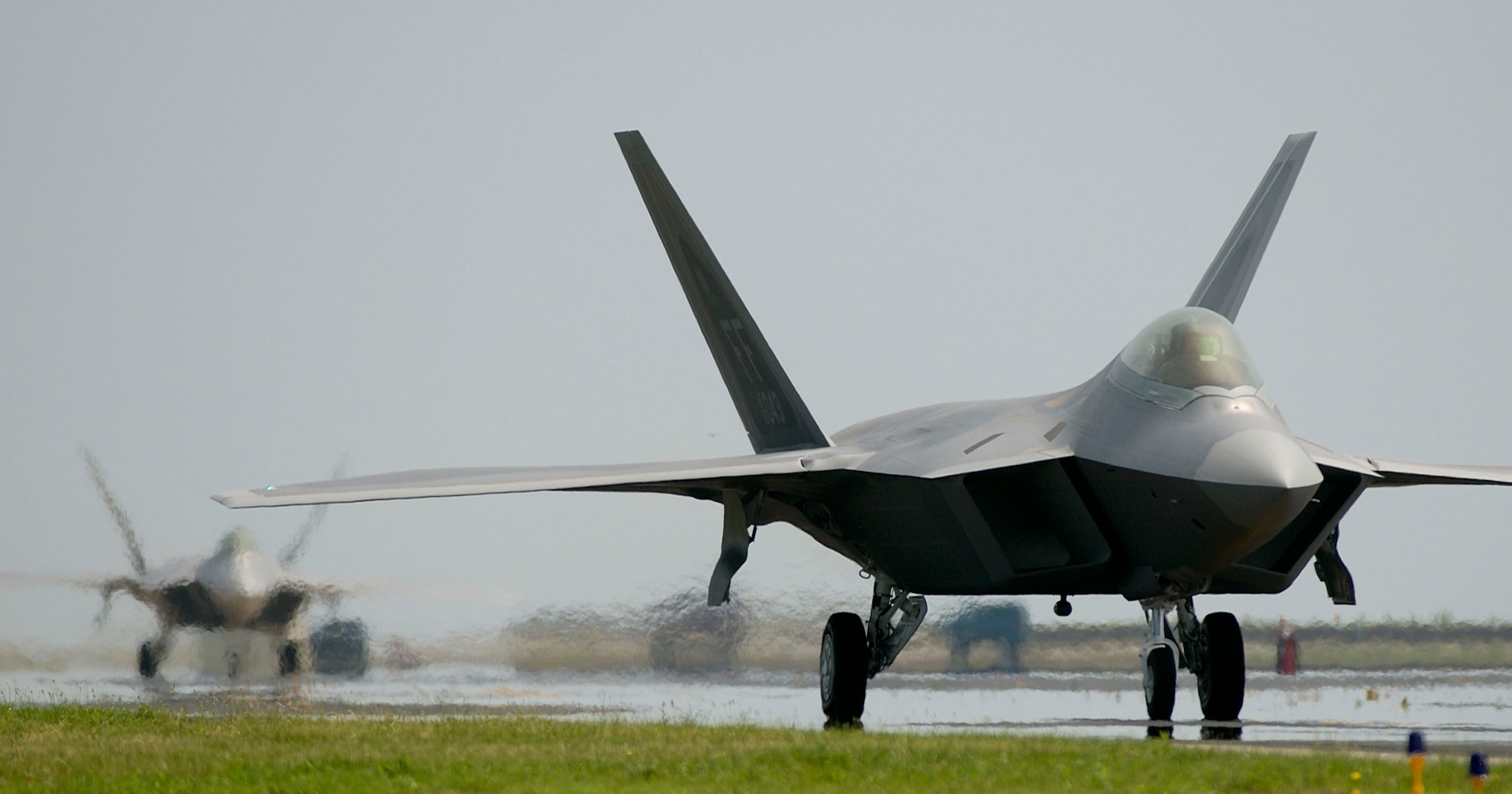F22 Raptor Weight - The Lockheed Martin F-22 Raptor is an American single-seat, twin-engine, all-weather stealth tactical fighter aircraft developed for the United States Air Force (USAF). Following the USAF's Advanced Tactical Fighter (ATF) program, the aircraft was designed as an air superiority fighter, but also has ground attack, electronic warfare and signals intelligence capabilities. Prime contractor Lockheed Martin built most of the F-22's airframe and weapons systems and performed final assembly, while Boeing supplied the wings, rear fuselage, avionics integration and the training system.
The aircraft first flew in 1997 and was designated the F-22 and F/A-22 before officially retiring from service as the F-22A in December 2005. Although the USAF originally planned to purchase a total of 750 ATFs, the program was reduced to 187 operational aircraft in 2009 due to high cost, air-to-air and emphasis on counter-insurgency operations at the time of production . missing. an export ban and the development of a more affordable and versatile F-35;
F22 Raptor Weight

Despite long development and initial operational difficulties, the F-22 became an important component of USAF tactical air power. The fighter's combination of stealth, aerodynamic efficiency and mission systems is capable of unparalleled air combat capabilities and sets the benchmark for growth.
Explained: F 22 Raptors Are Headed To The 'salute To America' Celebration
The F-22 is expected to be operational in the 2030s and will eventually be replaced by the USAF's Next Generation Air Dominance (NGAD) manned fighter component.
In 1981 the US Air Force identified the need for an Advanced Tactical Fighter (ATF) to replace the F-15 Eagle and F-16 Fighting Falcon. Dubbed "Sear Sky", this air superiority fighter program was inspired by emerging global threats, including new developments in Soviet air defense systems and the Sukhoi Su-27 "Flanker" - and the Mikoyan MiG-29" Fulcrum". A class of fighter aircraft.
It will take advantage of new fighter design technologies on the horizon, including composite materials, lightweight composites, advanced flight control systems and avionics, more powerful propulsion systems, and most importantly, stealth technology. In 1983, the ATF concept development team became the Systems Program Office (SPO) and managed the program at Wright-Patterson Air Force Base. A proposed Demonstration and Validation (Dem/Val) Request (RFP) was issued in September 1985, with a strong emphasis on stealth and supercruise. Due to the huge investment required to develop the technology needed to meet performance targets, companies were encouraged to team up. Among the bidding companies,
Lockheed and Northrop were selected on October 31, 1986. Lockheed worked with Boeing and Jerrell Dynamics through its Skunkworks division, while Northrop worked with McDonnell Douglas, and both teams of contractors began the barrage/ 50-month well, which resulted in . Flight test of two prototype technology demonstrators, the YF-22 and the YF-23 respectively. At the same time, Pratt & Whitney and Gerrell Electric were awarded contracts to develop the YF119 and YF120 genes respectively for the ATF gene competition.
Usaf Wants To Scrap The $150million Stealth F 22 Fighter Jet After Just 16 Years Service
Risk reduction focused on dam/well system engineering, technology development plans, and one-off aircraft design. In fact, after the selection down, the Lockheed team completely changed the airframe configuration in the summer of 1987 due to weight analysis during detailed design, with notable changes including a sweep of the planform of the wing. . Planning area
The contractors made extensive use of analytical and experimental methods, including computational fluid dynamics, wind tunnel testing, radar cross section (RCS) calculations, and pool testing; The Lockheed team will complete approximately 18,000 hours of wind tunnel testing. Avionics development was marked by extensive testing and prototyping and was supported by ground and flight laboratories.
During the dam/shaft, the SPO used the results of the performance and cost arbitration studies conducted by the contractor teams to adjust the ATF requirements and remove those that had significant weight and marginal cost. . The short takeoff and landing (STOL) requirement was relaxed to remove the thrust reversers, saving considerable weight. As avionics was a major cost factor, the side-sight radars were removed and the dedicated infrared search and track (IRST) system was downgraded from multi-color to monochrome as well as removed. However, the space and cooling provisions have been retained to allow for the later addition of these components. The ejection seat requirement was reduced from the new design to the current McDonnell Douglas ACES II. Despite efforts by contractor crews to control weight, the estimated takeoff weight was increased from 50,000 lbs (22,700 kg) to 60,000 lbs (27,200 kg), resulting in a requirement of Gine Thrust by 30. Increased from 000 lbf (133 kN) to 35,000 lbf (156 kN).
Each team produced two prototype air vehicles for Dam/Vail, one for each. The YF-22 made its maiden flight on September 29, 1990 and completed flight tests at a supercruise of Mach 1.58. After a dam/shaft flight test of the prototypes, on April 23, 1991, USAF Secretary Donald Rice declared the Lockheed and Pratt & Whitney team the winners of the ATF and GENE competitions.
It's A First: U.s. F 22 Raptor And French F3 R Rafale Fly Together Over Hawaii
The YF-23 design was considered stealthier and faster, while the YF-22, with its thrust-vectoring nozzles, was more maneuverable as well as less explosive and dangerous.
The press speculated that the Lockheed team's design was also more in line with that of the US Navy's Navalized Advanced Tactical Fighter (NATF).
As the program progressed to full-scale development, or engineering and manufacturing development (EMD), the design of the production F-22 differed significantly from that of the YF-22, despite a configuration similar. The wing leading edge sweep angle has been reduced from 48° to 42°, while the vertical stabilizers have been moved aft and the area has been reduced by 20%.
The shape of the radome was changed for better radar performance and the antenna wingtips were cut off. To improve visibility and pilot aerodynamics, the canopy was moved 7 inches (18 cm) forward and the gain inlets were moved aft 14 inches (36 cm). The shapes of the fuselage, wings and stabilizer trailing edges have been improved to improve aerodynamics, strength and stealth characteristics. The production cell was designed with a lifespan of 8,000 hours.
F 22 Raptor > Air Force > Fact Sheet Display
In addition to advances in air vehicle and propulsion technology, the F-22's avionics and software were of unprecedented complexity and scale, comprising 1.7 million lines of code with multiple SSR systems and software integration.
For initial design and troubleshooting of mission software development, a Boeing 757 was modified with an F-22 mission system to serve as a flying test bed avionics laboratory.
The end of the Cold War and the dissolution of the Soviet Union in 1991 reduced the Department of Defense's (DoD) appetite for new weapons systems, and subsequent years would see a decline in DoD spending. This resulted in the F-22's EMD being postponed and postponed several times. The division of labor between the teams continued largely from Dam/Vell to EMD, although prime contractor Lockheed acquired the fighter portfolio from Gerrell Dynamics in Fort Worth, Texas in 1993, acquiring the majority cell manufacturing. While Lockheed Martin Aeronautics

Primarily performing dam/pit work at its Skunk Works locations in Burbank and Palmdale, CA, the program will move office and EMD work from Burbank to Marietta, GA, where it has performed final assembly. . Boeing, a program partner, provided additional airframe components as well as avionics integration and training systems to Seattle, Washington.
China's Stealthy 5th Generation J 20 Fighter Jet. Can It Rival The F 22 Or F 35?
The first F-22, an EMD aircraft with tail number 4001, was delivered to Dobbins Air Reserve Base in Marietta on April 9, 1997, and first flew on September 7, 1997.
The USAF originally planned to order 750 ATFs at a total program cost of $44.3 billion and a procurement cost of $26.2 billion in fiscal year 1985, with production commencing in 1994 and the search for service in the late 1990s. A major aircraft review in 1990 led by Secretary of Defense Dick Chee brought it up to 648 aircraft in service beginning in 1996 and ending in the early to mid-1990s. 2000s. After the Cold War, this number was further reduced during the bottom-up review of 1993 and in 1997 instability in funding reduced the total to 339, which was further reduced to 277 in 2003 .
In 2004, with an emphasis on asymmetric counterinsurgency warfare in Iraq and Afghanistan, the DoD under Secretary Donald Rumsfeld reduced its planned purchase of 183 more operational aircraft, although the USAF had ordered 381. was prioritized to ensure an adequate number of squadrons for its air campaign.
A multi-year procurement plan was implemented in 2006 to save $15 billion, with a total program cost estimated at $62 billion for the delivery of 183 F-22 aircraft.
How To Defeat The Air Force's Powerful Stealth Fighter (updated)
In 2008, Congress passed a funding bill that increased the total number of production aircraft orders to 187.
Production, with the first batch awarded in September 2000, supported more than 1,000 contractors and suppliers in 46 states and 95,000 jobs, and spanned 15 years at a peak rate of approximately two aircraft per month.
The configuration was for initial flight testing and velop expansion, while the third block was a 2.0 aircraft designed to replicate the internal structure of the production airframe and allow it to test full flight loads. A further six EMD aircraft were built in the Block 10 configuration for development and upgrade testing, with the last two considered to be primarily production-quality jets. The squadron's operational output consisted of 74 Block 10/20 and 112 Block 30/35 trainer aircraft.

Sig p365 tulster holster, sig p365 iwb holster, sig holsters p365, sig p365 sas holster, sig p365 xl holster, sig p365 hybrid holster, appendix holster sig p365, safariland holster sig p365, sig p365 belt holster, sig p365 holster, sig p365 purse holster, sig sauer p365 holster

0 Comments